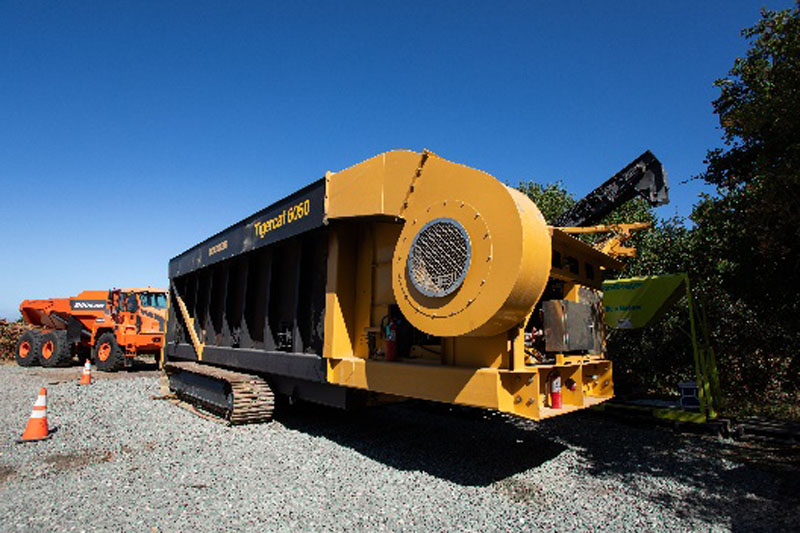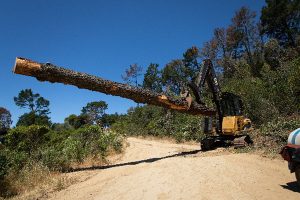East Bay Regional Parks using new technology to reduce fire risk

CASTRO VALLEY (Nov. 5, 2023) — The East Bay Regional Park District (EBRPD) has launched a first-of-its-kind fuels reduction project at Anthony Chabot Regional Park.
EBRPD is using an innovative and climate-friendly carbonator to dispose of vegetation with extremely low emissions, rather than conventional open-pile burning or transporting it long distances in diesel trucks.
In fall 2020, staff noticed significant tree die-off in its parks. Further investigation identified more than 1,500 acres of die-off within regional parks, mostly eucalyptus, but also bay and pine. While there are many contributing factors, the overarching cause is believed to be drought-stress due to climate change.
“We were facing a crisis,” said general manager Sabrina B. Landreth. “I directed staff to assess the situation quickly and come together with a plan of action, including obtaining the necessary funding to begin addressing the die-off.”
Complex situation
Much of the problem area was within the district’s Wildfire Hazard Mitigation and Resource Management Plan, which meant environmental approvals for fuels reduction work were already in place. However, they needed more than $30 million. In 2021, the state responded with a $10 million direct appropriation.
Adding to the complexity of the situation was the fact that removing so much dead and dying vegetation by traditional means required hauling it in trucks to plants that would burn it for fuel. Transporting the dead trees was cost-prohibitive, disruptive to the residential areas and potentially dangerous. It would also create greenhouse gases and pollution.
EBRPD’s innovative plan featured a carbonator machine, a Tigercat 6050, which resembles a trucking container with a box-like metal chamber. The device burns organic matter with very little oxygen and at very high temperatures, which breaks down the molecules of organic matter into a smaller material called biochar. The process creates extremely low emissions.
The resulting biochar – essentially elemental carbon – enriches soil by improving its water retention or pH, accelerates composting of green waste and filters toxins from water.
The district tested the carbonator at an 80-acre pilot project at Anthony Chabot in 2022. It proved to be net positive, with only a tiny fraction of emissions compared to open-pile burning or hauling off-site.
“Going forward, up to half of the biomass removed from parks could be converted into biochar,” said Khari Helae, the district’s assistant fire chief.
Fuels reduction program underway

A major fuels reduction project is now underway on 365 acres at Anthony Chabot, using $7.5 million of the state funding plus $1.5 million from the federal government. The plan includes a felling team removing trees from the top down and a mastication team thinning vegetation and trees from the ground up.
“By doing this work now, we will gain a more sustainable eco-system in the long-term to benefit generations to come,” said Landreth.
